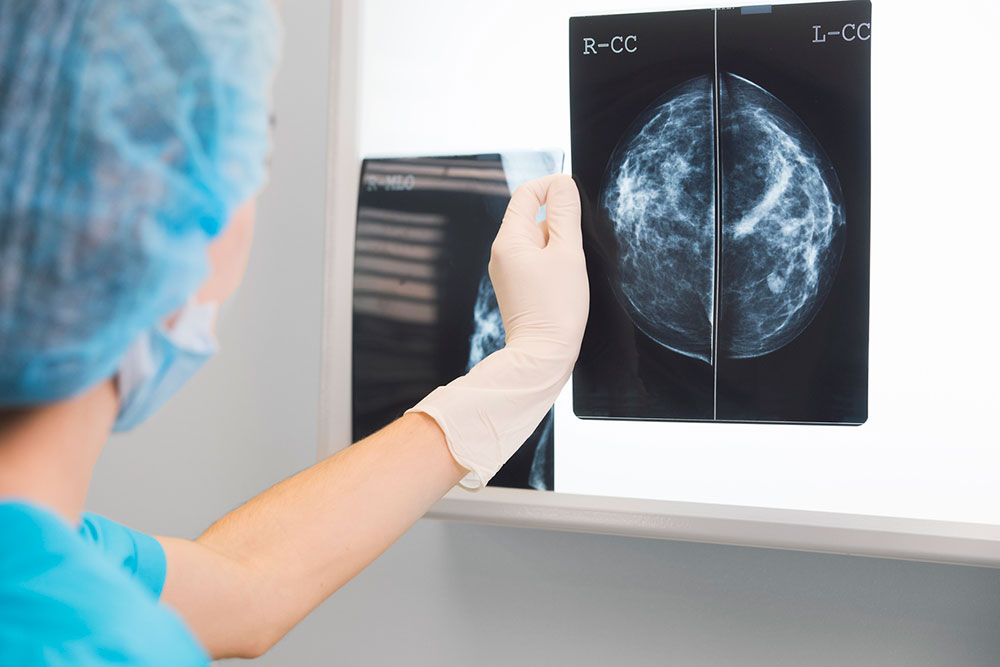Factor that doubles the risk of death from breast cancer identified

Researchers at Karolinska Institutet have discovered that the risk of death from breast cancer is twice as high for patients with high heterogeneity of the oestrogen receptor within the same tumour as compared to patients with low heterogeneity. The study, which is published in The Journal of the National Cancer Institute, also shows that the higher risk of death over a span of 25 years is independent of other known tumour markers and also holds true for Luminal A breast cancer, a subtype with a generally good prognosis.
 The most common form of breast cancer is oestrogen-receptor-positive, so called hormone-sensitive breast cancer. This means that the tumour needs the female hormone oestrogen to grow. Women who develop this kind of breast cancer have a remaining long-term risk of dying of the disease. It is also known that the oestrogen receptor can change when a breast cancer tumour spreads, which affects survival. Why this is the case, however, is not known, but a possible explanation is that there are tumour cells in one and the same tumour with varying degrees of expression of the oestrogen receptor. This is known as intra-tumour heterogeneity.
The most common form of breast cancer is oestrogen-receptor-positive, so called hormone-sensitive breast cancer. This means that the tumour needs the female hormone oestrogen to grow. Women who develop this kind of breast cancer have a remaining long-term risk of dying of the disease. It is also known that the oestrogen receptor can change when a breast cancer tumour spreads, which affects survival. Why this is the case, however, is not known, but a possible explanation is that there are tumour cells in one and the same tumour with varying degrees of expression of the oestrogen receptor. This is known as intra-tumour heterogeneity.
In the present study, Swedish and American researchers sought to discover if breast cancer patients with high heterogeneity of the oestrogen receptor in their breast cancer tumour have a higher long-term risk of dying. To this end, they studied the fates of 593 patients in a clinical study, who had been either treated with tamoxifen or not treated with systemic therapy after surgery. All women had been diagnosed with post-menopausal oestrogen-receptor-positive breast cancer between 1976 and 1990.
Independent of other known tumour markers
“Our study shows that patients with high intra-tumour heterogeneity of the oestrogen receptor were twice as likely to die up to 25-years after their diagnoses as compared to patients with low heterogeneity,” says Linda Lindström, researcher at the Department of Biosciences and Nutrition, Karolinska Institutet. “And this was independent of whether or not they’d received tamoxifen and of other known tumour markers.”
The researchers also discovered that the greater risk of death for patients with high intra-tumour heterogeneity also applied to patients with Luminal A breast cancer, a subtype of oestrogen-receptor-positive breast cancer that is considered to have a good prognosis.
“Patients with Luminal A breast cancer and high intra-tumour heterogeneity of the oestrogen receptor were also twice as likely to die from the disease,” continues Dr Lindström. “This is interesting given that patients with Luminal A breast cancer subtype are generally thought to have a good prognosis. We believe that if validated, these new findings should be useable within the near future.”
The study was financed by the Swedish Research Council, the Cancer Society in Stockholm, the Gösta Milton Donation Fund and the California Breast Cancer Research Program BCRP award. Co-author Laura J. van’t Veer, is a founder, shareholder and part-time employee of Agendia.
Publication
”Intratumor Heterogeneity of the Estrogen Receptor and the Long-term Risk of Fatal Breast Cancer”
Linda S. Lindström, Christina Yau, Kamila Czene, Carlie K. Thompson, Katherine A. Hoadley, Laura J. van’t Veer, Ron Balassanian, John W. Bishop, Philip M. Carpenter, Yunn-Yi Chen, Brian Datnow, Farnaz Hasteh, Gregor Krings, Fritz Lin, Yanhong Zhang, Bo Nordenskjöld, Olle Stål, Christopher C. Benz, Tommy Fornander, Alexander D. Borowsky, Laura J. Esserman
Journal of The National Cancer Institute, online 19 January 2018, doi: 10.1093/jnci/djx270
